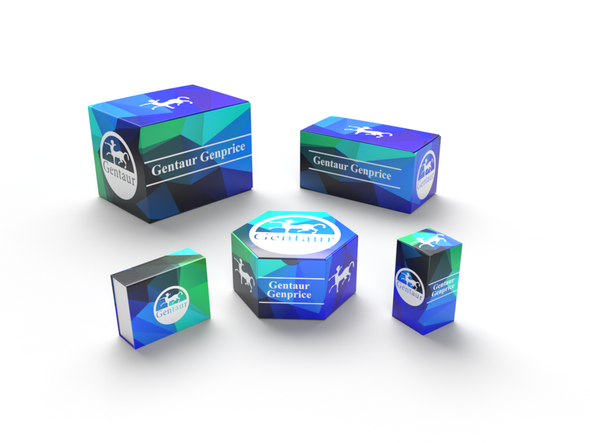Description
AJAP1 Antibody | 8163 | Gentaur UK, US & Europe Distribution
Host: Rabbit
Reactivity: Human, Mouse, Rat
Homology: N/A
Immunogen: AJAP1 antibody was raised against an 18 amino acid peptide near the carboxy terminus of human AJAP1.
The immunogen is located within amino acids 290 - 340 of AJAP1.
Research Area: Homeostasis, Cancer
Tested Application: E, WB, ICC
Application: AJAP1 antibody can be used for detection of AJAP1 by Western blot at 1 - 2 μg/mL. Antibody can also be used for immunocytochemistry starting at 2.5 μg/mL.
Antibody validated: Western Blot in rat samples and Immunocytochemistry in human samples. All other applications and species not yet tested.
Specificiy: AJAP1 antibody is human, mouse and rat reactive.
Positive Control 1: Cat. No. 1464 - Rat Liver Tissue Lysate
Positive Control 2: Cat. No. 17-004 - K-562 Cell Slide
Positive Control 3: N/A
Positive Control 4: N/A
Positive Control 5: N/A
Positive Control 6: N/A
Molecular Weight: Predicted: 45 kDa
Observed: 48 kDa
Validation: N/A
Isoform: N/A
Purification: AJAP1 antibody is affinity chromatography purified via peptide column.
Clonality: Polyclonal
Clone: N/A
Isotype: IgG
Conjugate: Unconjugated
Physical State: Liquid
Buffer: AJAP1 antibody is supplied in PBS containing 0.02% sodium azide.
Concentration: 1 mg/mL
Storage Condition: AJAP1 antibody can be stored at 4˚C for three months and -20˚C, stable for up to one year.
Alternate Name: Adherens junctions associated protein 1, Membrane protein shrew-1, MOT8, SHREW1
User Note: Optimal dilutions for each application to be determined by the researcher.
BACKGROUND: The Adherens Junction Associated Protein 1 (AJAP1) plays a key role in cell adhesion and cell migration (1) . It is a transmembrane protein found on the basolateral surface of epithelium and expressed by multiple types of epithelium (1, 2) . AJAP1 interacts with E-Cadherin and appears to promote the internalization of E-Cadherin upon growth factor stimulation (3) . This facilitates the dissolution of adherens junctions with an increase in cell motility (3, 4) .






